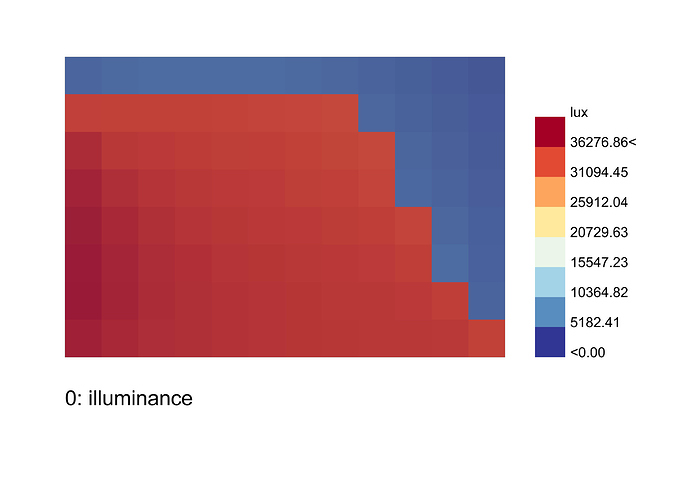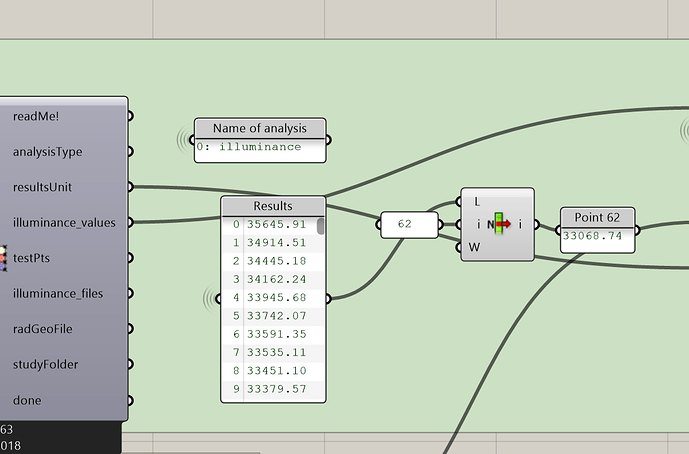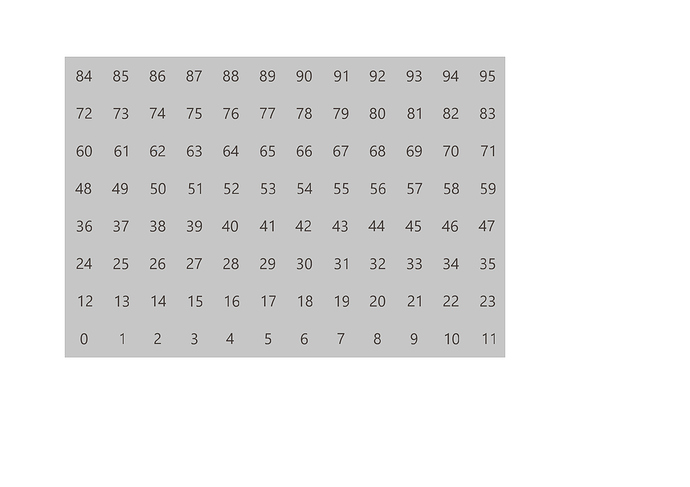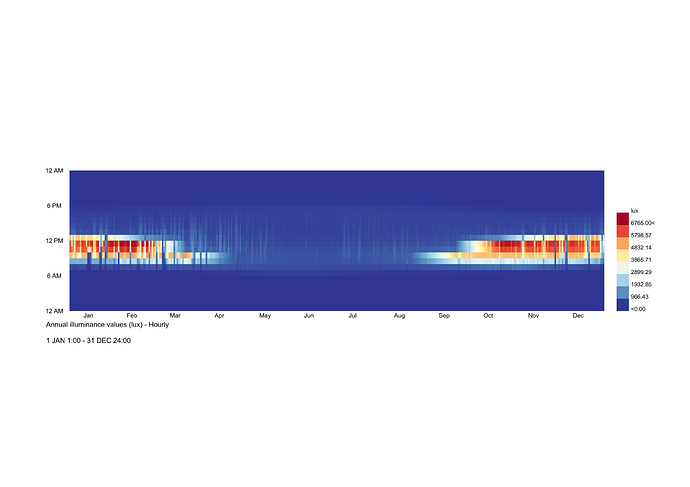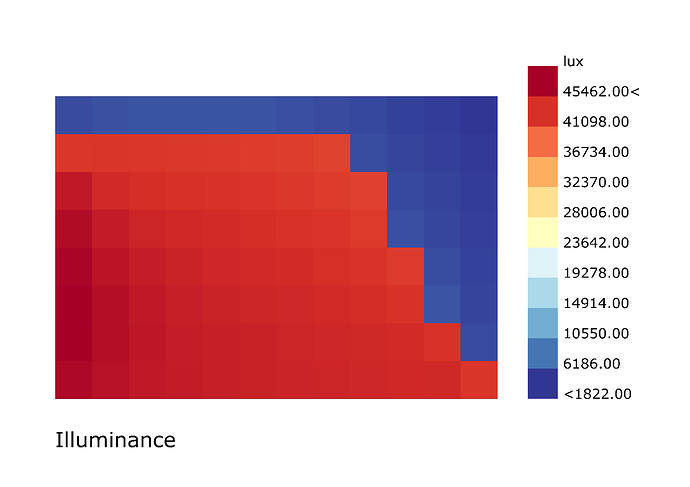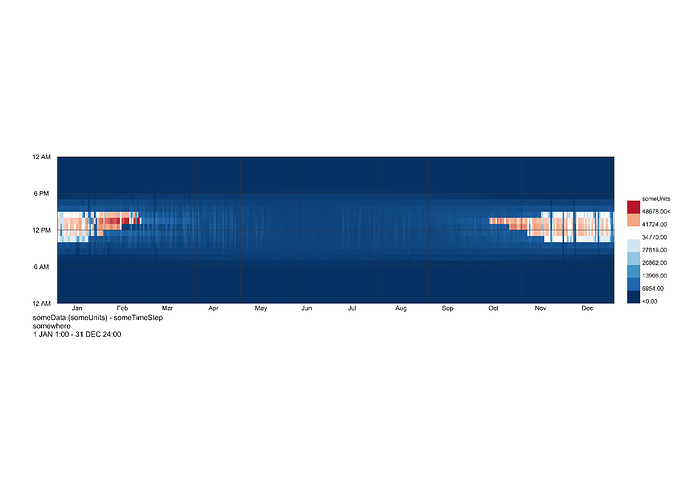Hello, I have a question for this two analyses, a brief information of what I did:
I’m analysing a room in Abu Dhabi with a 20º of orientation from the north.
On the grid based, I’ve all the data of January, 20th at 12:00, which will be this one:
So here we can see that the maximum is 36276 lux
Moreover according with this analysis my point number 62 has the value of 33068 lux
Now… for the annual analysis I put my sensor on the point 62 and run the analysis and this is my graph:
As you see the maximum is 6765 lux, way much lower than the maximum of the grid based.
So the 33068 lux of the grid based should be somewhere on the annual graph I am correct? So the values should be higher or otherwise the values of the grid should be lower.
But I just don’t understand where is the error or maybe the logic which I’m reading the values is not correct, as I understand the annual uses Daysim and grid uses Radiance, so which result is the “good” one, because the difference is quite a lot.
Here is the GH file, hope someone can help me with this doubt and thank you in advance.
Grid_Annual_Illuminance.gh (566.6 KB)
